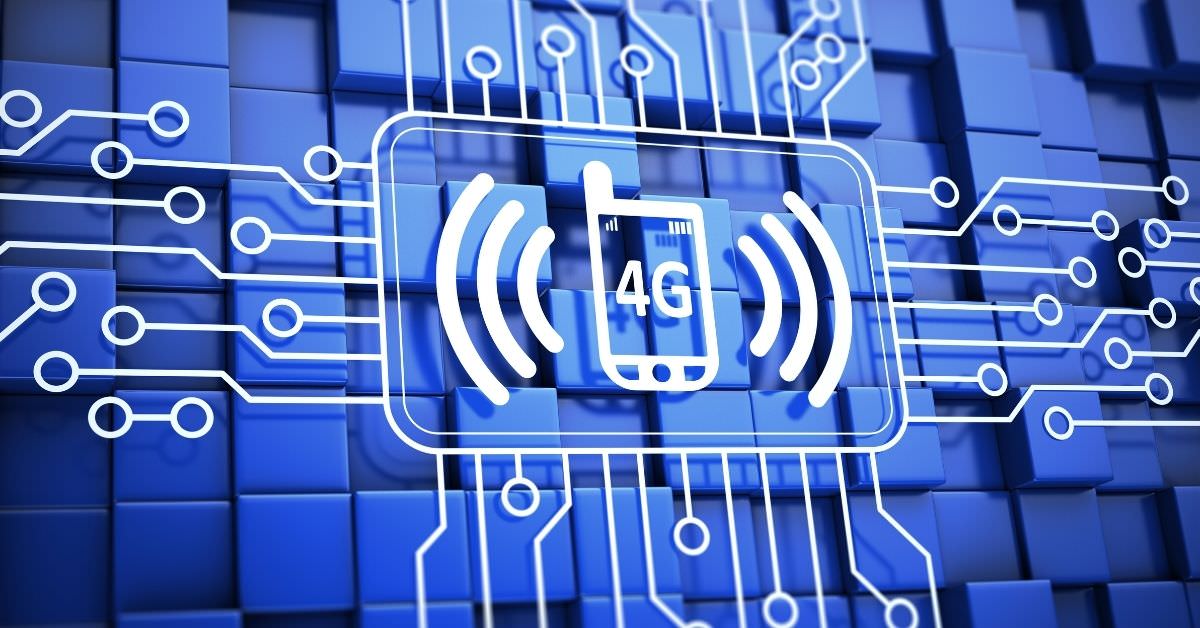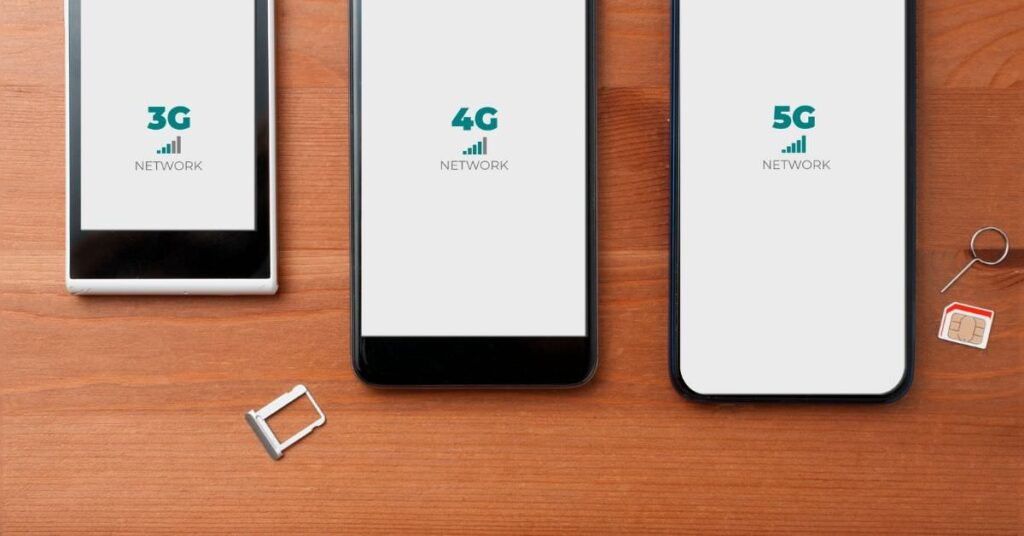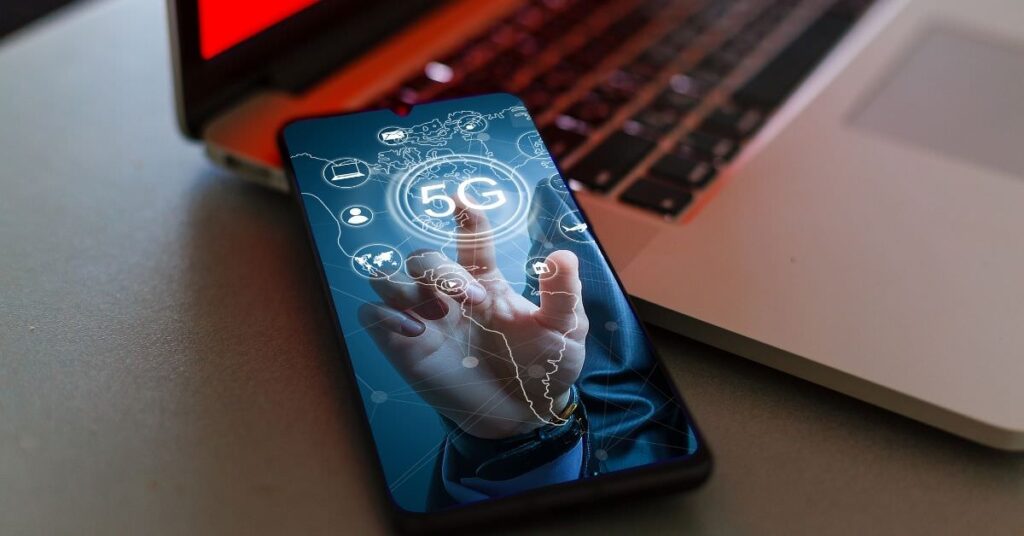
Discussing things in the internet space, like the 4G LTE network, can sometimes be daunting. In this blog post, we unpack the meaning of LTE and its origin.
Mobile internet evolves by generation
Mobile internet speed has ”evolved” over decades. A new generation is released every ten years, the first being in 1979. Each new generation is better than the one before.

This first-generation mobile network used analogue technologies to deliver simple voice calling services. Analogue services were based on FDMA technology which stands for Frequency Division Multiple Access. This means it uses separate frequency bands to send and receive communication wirelessly. Frequency bands split into sub-frequencies to power communication between the network and your phone.
The problem with analogue networks is that they don’t have encryption capabilities and therefore are not very secure.
The generations that followed used digital technologies, moving away from analogue.
Digital mobile networks use either a combination of:
- FDMA (Frequency Division Multiple Access) and TDMA (Time Division Multiple Access) or,
- CDMA (Code Division Multiple Access)
The second generation was secure
The most widely used technology standard for 2G is GSM (Global System for Mobile communications). 2G internet, released in 1991, offered voice calls, text messages and basic mobile internet. With 2G, voice calls were now secure. The two other technologies used for 2G dissemination were:
- Digital Advanced Mobile Phone System (D-AMPS) and,
- Interim Standard 95 (IS-95)

The third generation evolved with speed
3G was released in 2001. The two technologies that powered this internet generation were:
- UMTS (Universal Mobile Telecommunication System) and,
- CDMA2000
UMTS uses Wideband Code Division Multiple Access (WCDMA) to deliver download speeds of 2Mbps instead of 384Kbps with UMTS.
CDMA2000 can deliver peak download and upload speeds of up to 153 Kbps. These speeds improved through EVDO (Evolution Data Optimized). EVDO can provide download speeds of up to 14.7 Mbps and upload speeds of up to 5.4 Mbps.

4G needed LTE to go live
LTE (long-term evolution) is the 4G technology for UMTS and CDMA2000. 4G launched in 2009. 4G used packet-switching to offer IP (internet protocol) based voice calls, SMS and high-speed mobile internet.
A packet-based technology, Voice over LTE (VoLTE), enables voice calls and SMS in 4G LTE networks.
LTE networks offer faster download speeds, 300Mbps, and lower latency than 3G. If VoLTE is not supported, then LTE uses a circuit-switched fallback. This switchback allows for voice calls and SMS over 2G or 3G networks.

The LTE network evolved and got faster
LTE improved with LTE Advanced (LTE-A) and LTE Advanced Pro. They appear on a phone screen as LTE+. LTE+ can theoretically deliver up to 1Gbps and 3Gbps of speed. The Advanced networks deliver download speeds of around 65Mbps.
LTE uses OFDMA (Orthogonal Frequency Division Multiple Access) for radio access. OFDMA is highly efficient and supports a modulation technique, QAM (Quadrature Amplitude Modulation), which generates higher data rates to utilise the available frequency better.
5G blows 4G out of the water
Highly controversial 5G mobile internet arrived in 2019. Powering 5G is New Radio (NR) technology that delivers peak download speeds of 10Gbps but average speeds of 150Mbps to 200Mbps. 5G also offers extremely low latency at one millisecond.

Why was LTE used in naming 4G?
Before launch, a generation of internet must conform to specific technical requirements. These requirements include latency, frequency and, of course, speed. The International Telecommunications Union or ITU sets out these requirements.
4G initially didn’t achieve the required speeds
In 2001, the ITU set the speed requirements to a minimum of 144Kbps and a maximum of 7Mbps for 3G. 3G operated at those speeds and was released for sale.
4G outperformed 3G in speed when released in 2009. However, 4G did not meet the ITU’s minimum and maximum speed requirements.
How could the mobile networks circumvent this issue and get their new product to market? They invented an interim solution and dubbed this solution LTE. 4G LTE should run at a download speed of 20Mbps and an upload speed of 10Mbps. The truth is, it doesn’t. It runs at speeds of 5Mbps and 10Mbps, respectively, therefore falling short of the ITU’s minimum speed requirements for 4G internet.
Mobile networks released 4G internet as 4GLTE (fourth-generation long-term evolution). The networks promised the ITU that 4G would reach those speeds as the technology evolved over the long term. In other words, they promised that 4G would get faster over time and would eventually meet the minimum speed requirements. They achieved those speeds and subsequently launched LTE Advanced and Pro.



